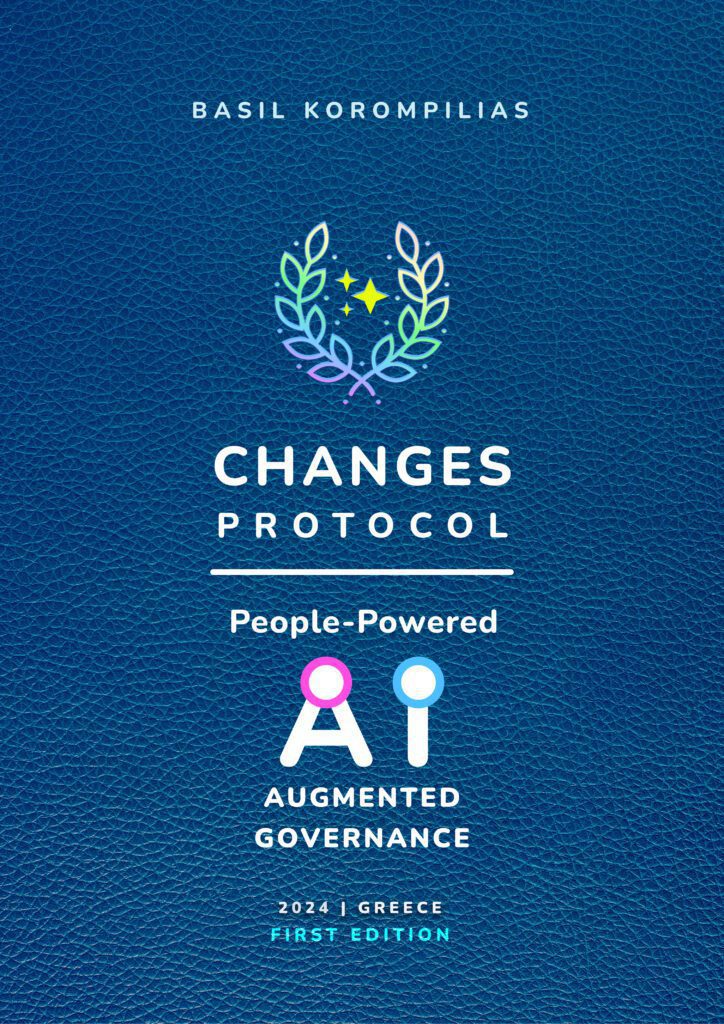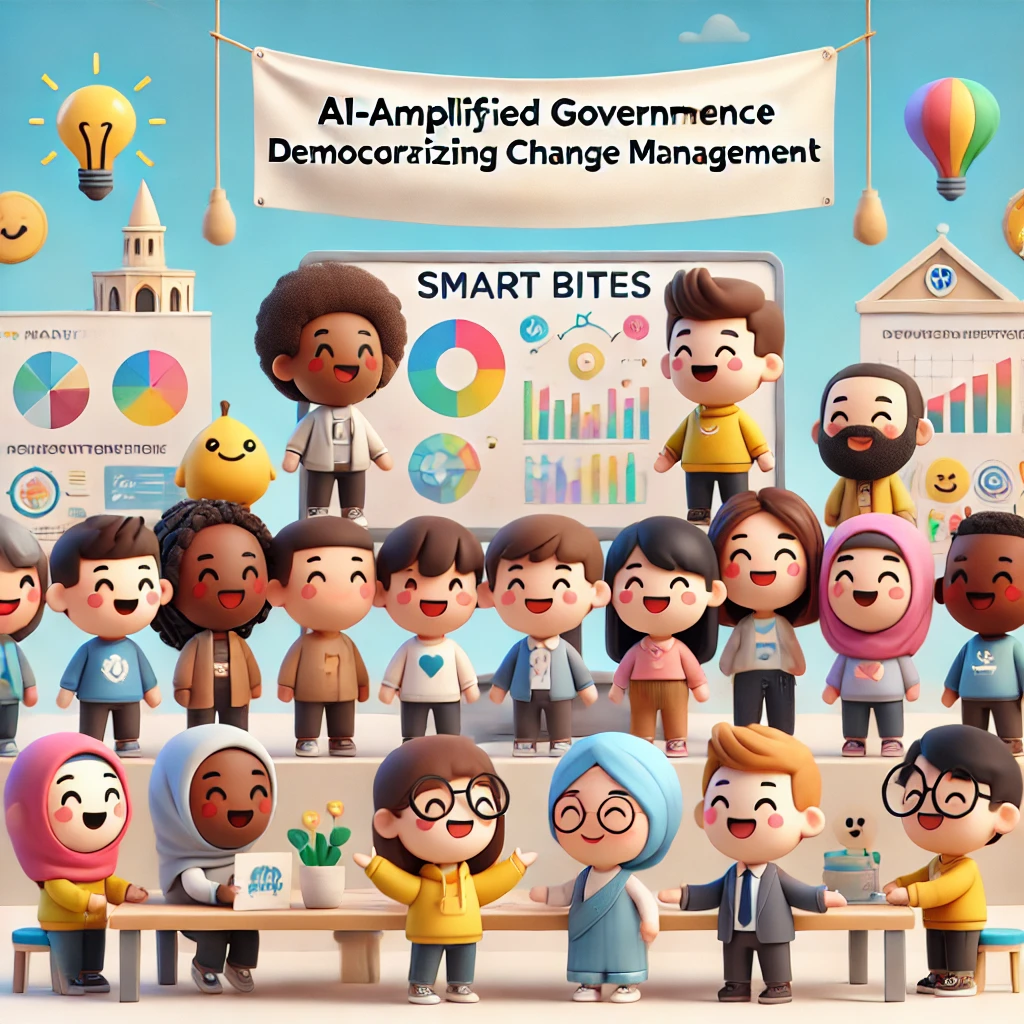
Welcome to the Changes Protocol Cookbook
The Changes Protocol Cookbook is a dynamic and evolving guide designed to help individuals and organizations navigate the complexities of governance. In a world where adaptability and balance are essential, this Cookbook offers a structured yet flexible framework that integrates advanced analytical tools with thoughtful, human-centered governance principles.
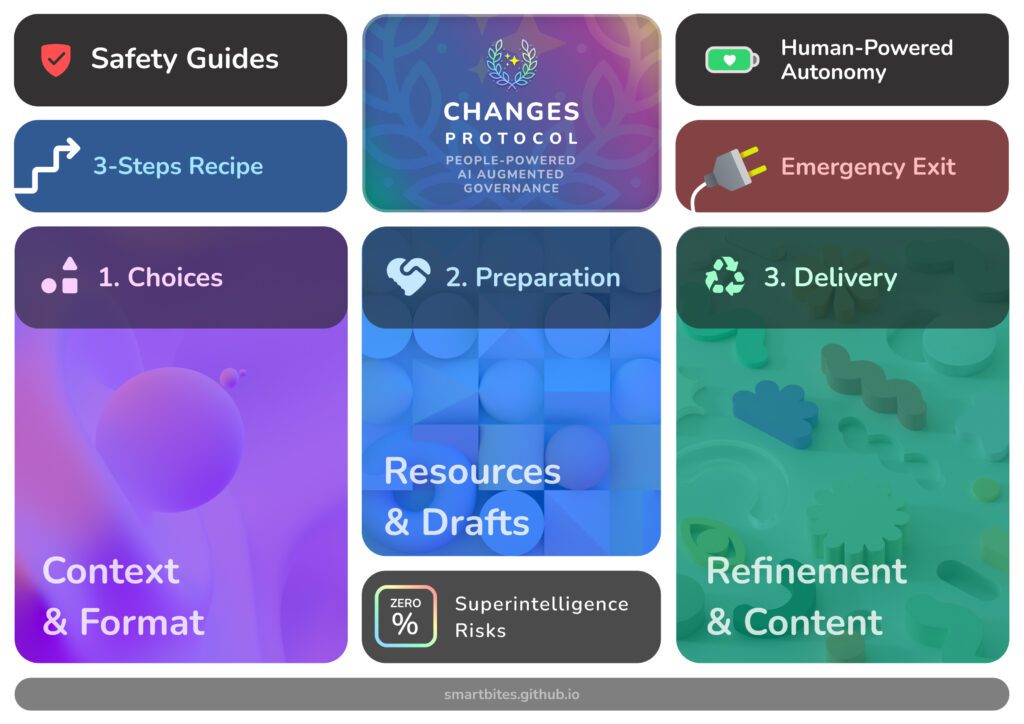
Central to this process are two core tools: the Changes Balance Scale and the Changes Flavours Compass. The Balance Scale provides a clear and objective measure of alignment within various aspects of governance, ensuring that each element is fine-tuned for optimal effectiveness. The Flavours Compass offers directional guidance, helping align governance actions with broader principles such as unity, diversity, and well-being.
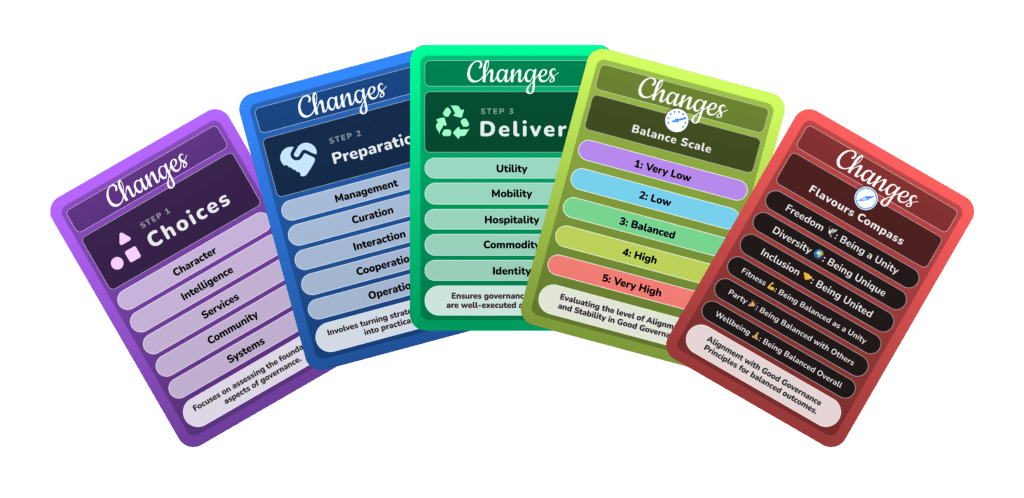
This Cookbook is intended to be a skill set—a way of thinking and acting that evolves with you. Whether you are addressing broad systemic changes or focusing on specific areas, this framework is adaptable. It provides both Generalized (Long) and Specialized (Short) approaches, offering flexibility to perform comprehensive evaluations or concentrate on key aspects that require immediate attention.
The process unfolds in three phases: Choices (Appetizer), Preparation (Main Course), and Delivery (Dessert). Each phase builds on the last, ensuring a holistic, balanced approach to governance. Reflection and adjustment are encouraged throughout the journey, enabling governance practices to stay aligned with evolving goals and contexts.
Whether managing a complex transformation or refining specific governance practices, the Changes Protocol Cookbookequips you with the insights and tools to navigate governance challenges effectively and sustainably. This guide fosters a governance environment that is resilient, adaptive, and deeply aligned with the values that drive meaningful progress.

📝 3-Step Recipe
The Changes Protocol Cookbook offers a structured yet iterative approach to managing change. It ensures that balance and alignment are maintained across governance practices by integrating the Changes Balance Scale and the Changes Flavours Compass into every phase of decision-making.
Iterative Evaluation Framework:
This recipe is designed to be iterative, allowing for continuous reflection and refinement. It can be approached in two ways:
- Generalized (Long) Approach: A thorough evaluation of all Input States across all Flavours, ideal for in-depth analysis and comprehensive governance assessments.
- Specialized (Short) Approach: A targeted evaluation focusing on 1-3 key Input States per phase, allowing quicker, focused analysis while maintaining depth through the application of the Changes Balance Scale and Flavours Compass.
Step 1. Choices – Input States (Appetizer)
In this initial phase, attention is focused on evaluating the foundational aspects of governance, referred to as Input States. You may choose between a comprehensive Generalized (Long) approach or a more focused Specialized (Short) approach. The Changes Flavours Compass helps explore each Input State across its various dimensions, while the Changes Balance Scale measures the alignment of each element.
Key Input States:
- Character: Represents the core attributes and qualities that define governance.
- Intelligence: Reflects the capacity for informed decision-making and adaptation.
- Services: Encompasses the functions and outputs of governance.
- Community: Relates to interaction and collaboration among stakeholders.
- Systems: Refers to structures and processes that support governance activities.
Example: To evaluate the Input State of Character, examine how it aligns with each Flavour on the Changes Flavours Compass. Assess whether Character empowers unity (Freedom) and supports unique identities (Diversity). Use the Changes Balance Scale to determine if each aspect is at an optimal level (3: Balanced) or if adjustments are needed.
Step 2. Preparation – Change States (Main Course)
The Preparation phase translates the insights from Step 1 into actionable governance practices. This phase centers on integrating the results of your analysis into active governance areas, known as Change States. The Changes Flavours Compass ensures that actions align with broader governance goals and principles.
Key Change States:
- Management: Involves leadership and strategic direction.
- Curation: Focuses on the careful selection and maintenance of resources and data.
- Interaction: Encompasses exchanges between governance systems and stakeholders.
- Cooperation: Encourages collaboration and partnerships.
- Operation: Concerns the practical implementation of governance plans.
Example: If Character was strong in terms of Freedom but lacking in Diversity, the Management approach could be adapted to enhance diversity within governance actions.
Step 3. Delivery – Output States (Dessert)
In this final phase, governance outcomes are refined and finalized. The focus is on Output States, which represent the combined results of the passive Input States and the active Change States. This phase ensures that the governance outcomes are balanced, effective, and aligned with the Changes Flavours Compass and Balance Scale.
Key Output States:
- Utility: Practical application and tangible benefits.
- Mobility: Adaptability across different contexts.
- Hospitality: Inclusiveness and accessibility.
- Commodity: Usability and availability.
- Identity: Alignment with cultural and organizational values.
Example: In Step 3, evaluations from the Change States are applied to the Output States. If Management was strong in practical application but weak in inclusivity, reassess using the Utility state to ensure alignment with inclusion and well-being principles.

🌈 Additional Resources
This section explores how AI tools, change management models, and ethical practices integrate seamlessly with the Changes Protocol framework. AI Agents, for example, play a vital role in enhancing communication and supporting decision-making through context-aware dialogue.
AI Tools
In the Changes Protocol Cookbook, AI Agents enhance communication, refine strategies, and support decision-making processes. These tools engage in deeper, context-aware dialogue, aligning governance with broader goals.
AI Agents and Dialogue Analysis: AI Agents analyze content, tone, and structure, offering insights that support more balanced and effective communication strategies. This capability enhances the Interaction and Cooperation Change States, ensuring balanced governance.
Change Management Models
The Changes Protocol Cookbook works alongside established change management models, integrating AI tools to support governance practices. Below are examples of how familiar models are enhanced by the Changes Protocol.
Kotter’s 8-Step Process:
- AI Agents analyze trends and internal dynamics, highlighting urgency while ensuring balance with the Changes Balance Scale.
- Coalition-building and crafting a vision are supported by AI Agents through predictive analytics and cross-functional dialogue.
ADKAR Model:
- AI Agents enhance awareness, desire, knowledge, and reinforcement by aligning stakeholder engagement with the Flavours Compass and providing continuous feedback.
Lewin’s Change Model:
- AI Agents monitor change stability, supporting communication and adaptation in the Change and Refreeze phases.
Tips & Best Practices
Ethical practices are embedded deeply into each Change State of the Changes Protocol. These principles—transparency, participation, and continuity—ensure that governance remains effective and ethically sound. AI tools combined with ethical governance models provide a robust framework for sustainable change management.
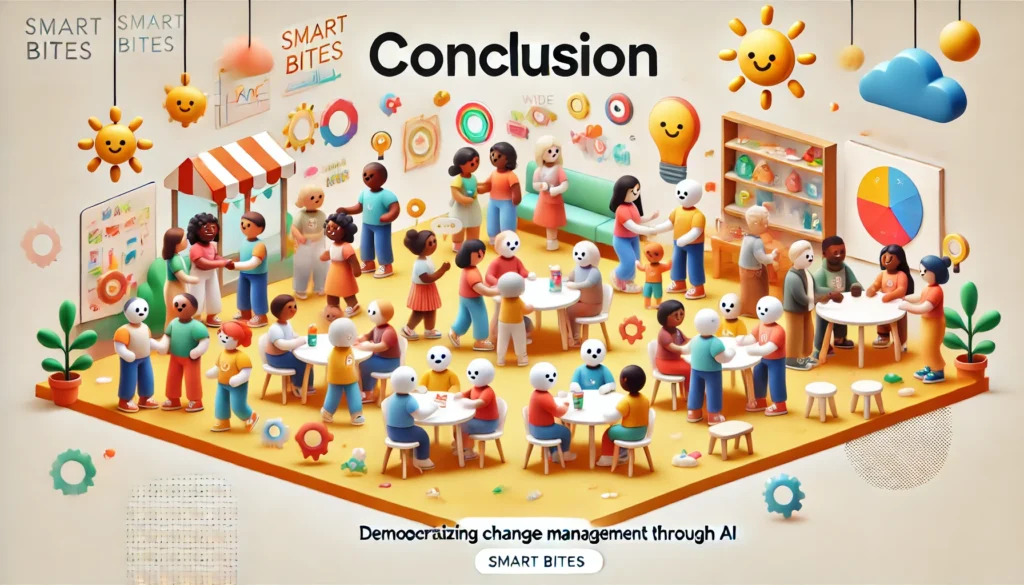
Conclusion
The Changes Protocol Cookbook offers a flexible and comprehensive framework for managing governance challenges. By integrating the Changes Balance Scale and Flavours Compass, it helps individuals and organizations maintain balance across all governance areas, adapting as challenges evolve.
This dynamic process encourages continuous reflection and growth, whether using the Generalized (Long) or Specialized (Short) approach. With AI tools and dialogue analysis, it brings precision and collaboration to decision-making, ensuring data-driven, ethical outcomes.
By implementing the Changes Protocol, you foster a sustainable, resilient governance environment that embraces positive change. The Cookbook will remain a valuable guide as your organization adapts to future challenges, ensuring balance and alignment in a constantly evolving world. For more insights, download the eBook to explore further tools and resources for innovative governance.
For an in-depth exploration of the <strong>Changes Protocol: People-Powered AI-Augmented Governance</strong>, including detailed research, comprehensive guides, and interactive cards designed to gamify your governance and change management practices, feel free to download the eBook and embark on a journey towards more balanced, adaptive, and innovative governance.
